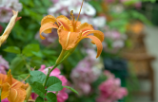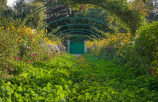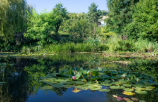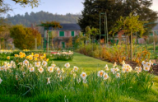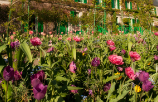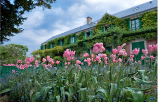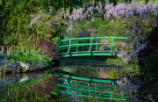BEHIND THE SCENES IN THE GARDEN…
Fondation Monet’s doors closed on the evening of 1 November for our customary winter break. Time to look back on the season and draw up a list of the work to be done!
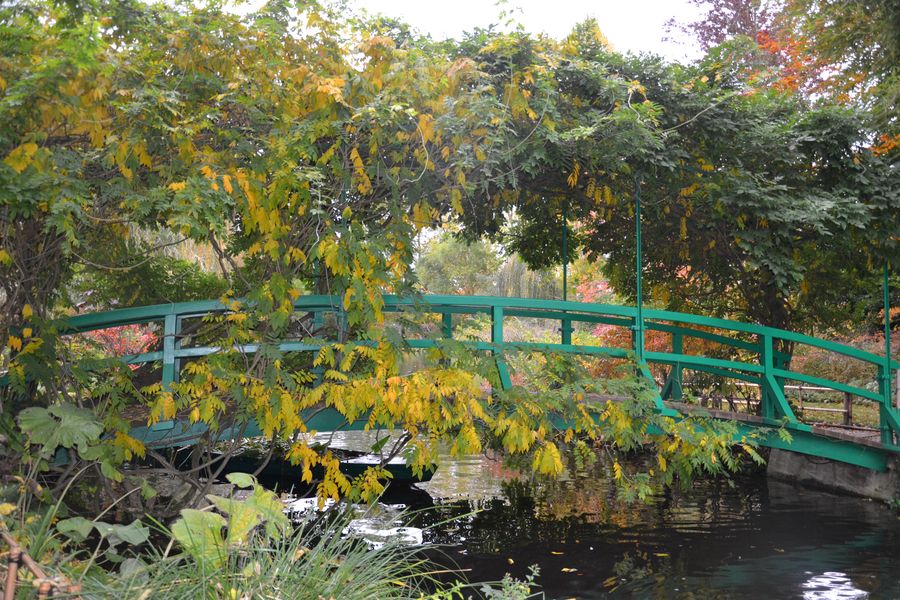
Over 708,000 visitors walked in Claude Monet’s footsteps this season! Over the months, the tulips, narcissi, water lilies and dahlias have provided a stunning floral display. Now it is time for the gardeners to take stock: “Some lovely surprises were the phlox and cosmos which grew well, unlike last year,” rejoices Rémi Lecoutre, Deputy Head Gardener at Fondation Monet. “The gorgeous asters provided a wonderful end to the season. Some beds had an abundance of flowers, which surprised the visitors! And the garden weathered the heat waves quite well. We are also happy to welcome back to the garden the Digoin Star, a dahlia that probably disappeared in the prewar years. What an amazing adventure!” The gardener’s satisfaction is, however, tinged with slight disappointments. “The pink pelargonium was meant to be vigorous and flower abundantly but did not grow as we might have wished,” laments Rémi Lecoutre.
After taking stock of the 2019 season, our gardeners are now getting on with preparing for 2020. “On the morning of 4 November, we started pulling up all the nasturtiums in the central path in order to create access,” explains the Deputy Head Gardener. “We then started clearing the path from the top. At the same time, another team started pulling up the dahlias. The ground has to be completely cleared! Other gardeners then dug over the flower beds. This stage enables us to divide any perennials that have grown too big, such as the asters. We turn the soil over to enrich it and, soon after, we replant it with spring bulbs.”

Throughout the process, the workflow is scrupulously adhered to. “The gardeners’ task is then to clear the bottom of the garden. In fact, we are at the mercy of the frost and this is one of the areas that struggles the most to thaw!” The next step takes place in front of the master impressionist’s house. “As with the central path, this area is home to a huge number of bulbs. So it takes high priority! We then concentrate on the paths running the length of the public area and finish with the flower beds that only hold a few bulbs. Everything must be planted before Christmas!”
The various bulb varieties also influence the planting order. “The first phase involves the biggest bulbs: some alliums, fritillaria, eremerus and others. We have to record where everything is planted! The second phase sees the arrival of the tulips, which are planted in sequences. The fleur-de-lys tulips are in the back while the early tulips, which flower at a lower height, are placed in the front. The third phase is the smaller bulbs: ixia, wood anemones and more. We plant them when we start to put the biennials in the ground. So that means a fortnight before Christmas, if everything goes well!”
Our gardeners will carry out other major projects over winter. The work on renewing the rose garden that was started this season (508 plants and 58 varieties) will enter its second phase. Just like the big iris project! And two large trees will be changed. “One weeping willow planted less than ten years ago is dying. We feel that it has exhausted its reserves… We also have to replace the paulownia that died this spring.” Mark it on your calendar: beginning on 1 April 2020, come visit to enjoy our new horticultural features! “As soon as we reopen, visitors will be welcomed with a burst of colour!” promises Rémi Lecoutre.

Rémi Lecoutre, chef jardinier adjoint



